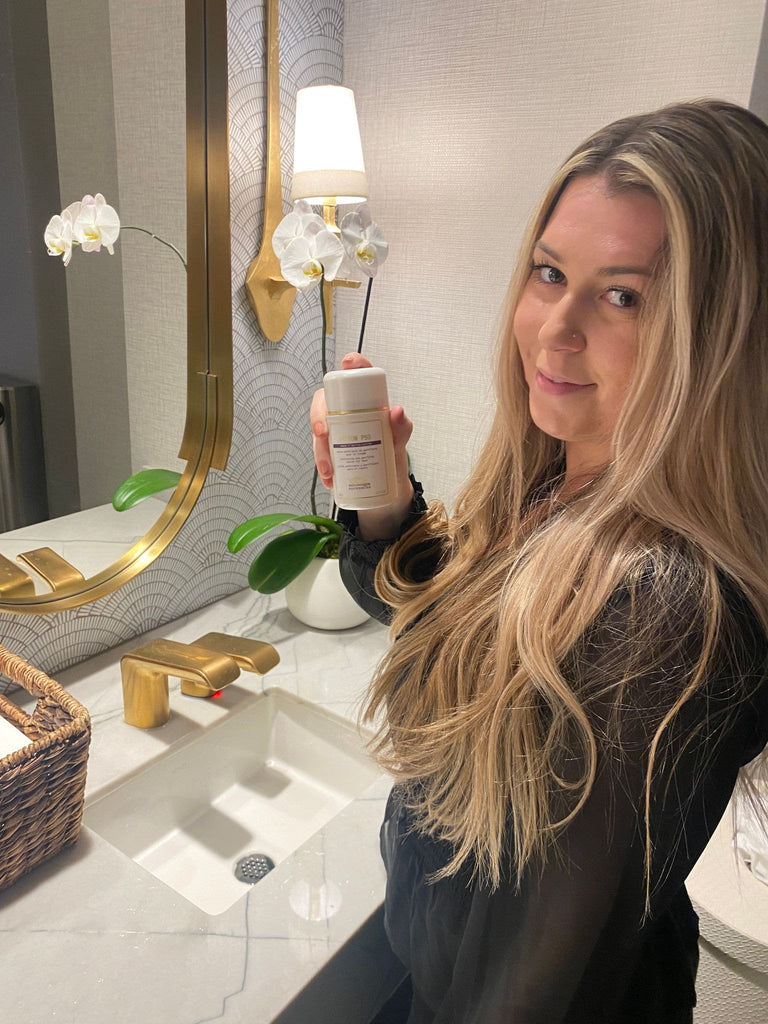Do you have questions about what how to incorporate products into your routine? Or how to treat hormonal acne? We've got you covered! We are sharing our top skincare FAQs answered by our team of skin experts in a four-part series!
HOW DO I KNOW MY SKIN TYPE?
-
Oily skin appears shiny and greasy - this is caused by overproduction of sebum in the skin. Your skin may have enlarged pores, blemishes, blackheads, and whiteheads. The ideal routine for someone with oily skin includes a gentle, foamy cleanser to effectively remove dirt, oil, etc. and a non-comedogenic light moisturizer to protect and hydrate the skin.
-
Dry skin produces less oil. Your skin will appear dull, rough, and sometimes flaky. The skin will feel tight and be noticeably dehydrated, with noticeably smaller pores as well. The ideal routine for someone with dry skin consists of a milky, hydrating cleanser as well as a moisturizer that protects the barrier. You may need to apply moisturizer throughout the day to provide that moisture and hydration for your skin.
-
Normal skin appears balanced. There are no signs of excess sebum and no signs of flakiness or tightness. The skin appears smooth, blemish-free, and with smaller pores. It’s important for someone with normal skin to maintain the hydration to protect the skin barrier.
-
Combination skin includes dry and oily areas. Someone who presents with combination skin will have a more oily T-zone (forehead, nose, chin) and drier cheeks and outer areas. This skin type can change with the seasons, so it’s important to adjust your skincare routine accordingly. Cleansing and hydrating the skin are important, and using different ingredients to cater to both oily and dry areas.
- Sensitive skin can be oily, dry, or normal. Sensitive skin appears red, itchy, and irritated. This type of skin is easily triggered by environmental factors and ingredients like fragrance. Avoid extremely active products and focus on a more gentle, hydrating approach to calm the skin barrier.

Top blackhead removing products - iS Clinical Cleansing Complex Polish & BR Masque Vivant
HOW DO YOU REMOVE BLACKHEADS?
- There are many products that can target blackheads. For prevention, it’s important to cleanse daily and remove any make-up/build-up on the skin.
- A blackhead forms when the pore becomes clogged with excess oil and dead skin. This is an open surface that oxidizes - creating a dark color on the top.
- It’s important not to pick or squeeze your own skin, as this can cause unnecessary scarring.
- Look for ingredients that will help exfoliate, soften, and remove blackheads. The best ingredient for blackheads is salicylic acid - this acid can penetrate into the pore and break down anything that clogs it.
- Regular exfoliation is also important in helping to remove dead skin that can cause blackheads, as well as remove existing ones. Gently exfoliating with AHAs and BHAs will help treat the superficial layer of the skin. Look for ingredients like glycolic acid or salicylic acid.
-
Retinol is designed to speed up the skin cell turnover. This is important in removing the top layer of dead, unhealthy skin - preventing clogged pores.
- Clay masks can also be used once or twice a week to help draw oil and dirt out of the skin.
- Use non-comedogenic (non-pore clogging) products. Read the labels of skincare products effectively.
SHOPPING WITH VIRGINIA INSTITUTE
Shop local with us at VI! Not only do we price match products (excluding Amazon & Walmart as they are not verified sellers & are not allowed to sell medical grade skincare), but we also have free shipping, local pick-up & provide free samples with orders! Call 703-327-8200, DM us or shop our site below (use code FREESHIP)!


Leave a comment